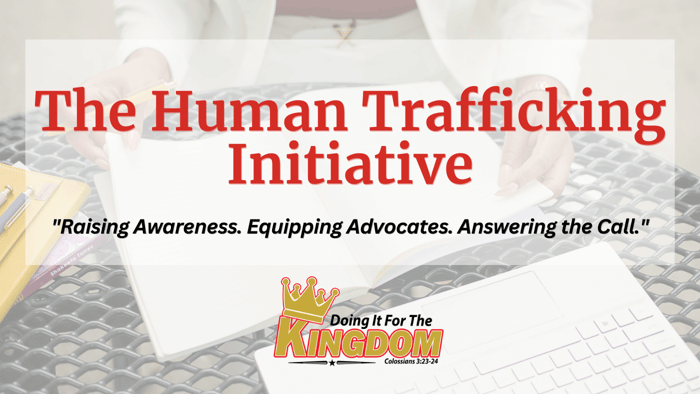Table of Contents
- The Facts of the Emmanuel College Admissions Case: What Happened?
- What Is Attempted Sex Trafficking?
- Power, Privilege, and Predation: How This Could Happen
- Institutional Response: Emmanuel College Reacts
- Red Flags and Warning Signs: What Parents and Students Should Know
- Spiritual and Psychological Insight
- What Schools Can Do to Prevent This
- Conclusion
- 🔒 Protect the Gateways: Equip Yourself to Spot Trafficking in Higher Ed
- FAQs
Abuse of Access: The Emmanuel College Admissions Case
Abuse of Access: The Emmanuel College Admissions Case
 When we think of human trafficking, our minds often jump to kidnappings, border crossings, and international crime rings. But what if the trafficker isn’t a stranger lurking in the shadows—but someone with institutional power, a respected title, and daily access to vulnerable students?
When we think of human trafficking, our minds often jump to kidnappings, border crossings, and international crime rings. But what if the trafficker isn’t a stranger lurking in the shadows—but someone with institutional power, a respected title, and daily access to vulnerable students?
That was the chilling reality in a 2025 case involving Jacob Henriques, an Assistant Director of Admissions at Emmanuel College in Boston, Massachusetts. What began as a standard campus tour turned into a horrifying example of predatory grooming, attempted trafficking, and a betrayal of the public trust.
The Facts of the Emmanuel College Admissions Case: What Happened?
In April 2025, Jacob Henriques, a 37-year-old college admissions official, was arrested and charged with attempted sex trafficking of a minor and enticement of a child under 18. His victim? A 17-year-old high school student who had recently toured the college campus, someone who trusted that adults in educational settings had her best interests in mind.
Timeline of Events of the Emmanuel College Admissions Case
Spring 2025: The 17-year-old visited Emmanuel College as a prospective student.
Shortly after the tour, Henriques used college-accessed information (including contact records and applicant files) to personally reach out to the teen.
He began sending her sexually explicit messages and images, including offers of money in exchange for sexual acts.
The teen reported the messages to authorities, triggering a federal and local law enforcement investigation.
Henriques was arrested shortly thereafter and charged under federal trafficking and exploitation laws.
What made this case particularly disturbing was that Henriques leveraged his official position to target a minor, gaining her trust through the college’s admissions process and violating the boundaries of a system designed to protect students.
What Is Attempted Sex Trafficking?
Henriques did not physically force or abduct the teen. However, federal law defines sex trafficking as including coercion, fraud, or the exploitation of a minor in exchange for anything of value, including money, gifts, or even grades.
Because the victim was under 18, no evidence of physical force or coercion is required to establish sex trafficking. His behavior—including offering money for sex and repeatedly reaching out after being blocked—met the legal criteria for attempted trafficking and exploitation.
This case highlights an important truth: trafficking can start with something as subtle as a direct message. Many predators use positions of influence and institutional access to gain the trust of vulnerable youth before escalating their behavior.
Power, Privilege, and Predation: How This Could Happen
In most college admissions offices, staff have access to a wide array of student information, including:
Full names
Birthdates
High school affiliations
Contact info (emails and phone numbers)
Applicant essays, photos, and records of tours or interviews
While this information is typically used for legitimate follow-ups, Henriques exploited his access for personal and criminal gain in the Emmanuel College Admissions Case.
Once the initial contact was made, he used flattery, promises of money, and manipulation to try to engage the minor in sexually explicit exchanges. He reportedly used other methods to continue reaching out when she blocked him, demonstrating calculated persistence—a red flag for grooming behavior.
Institutional Response: Emmanuel College Reacts
Following the arrest, Emmanuel College immediately terminated Henriques and issued a public statement emphasizing that it had “zero tolerance” for misconduct and was cooperating fully with authorities.
However, critics have raised important questions:
How was Henriques able to bypass internal communication safeguards?
Were other students ever targeted?
What background checks or digital monitoring systems were in place, if any?
There’s no public evidence that other students were affected, but this case has put colleges on high alert. Admissions staff, student workers, and campus ambassadors often operate with significant unsupervised access to young, impressionable prospects, and institutions must do more to ensure boundaries are not crossed.
Red Flags and Warning Signs: What Parents and Students Should Know
Traffickers often exploit moments of transition, such as applying for college, starting a new job, or moving to a new city. Students and parents should be on the lookout for red flags like:
A staff member contacting a student through unofficial channels (personal phone or social media)
Inappropriate compliments or questions unrelated to academics
Offers of money, gifts, or secret meetings
Pressure to keep communication private
Explicit content or sexual advances, even if framed as a "joke" or compliment
In this case, the student’s courage to report the behavior stopped further harm, but many don’t feel empowered or supported enough to come forward.
Spiritual and Psychological Insight
From a faith-based and trauma-informed perspective, this case reminds us of the following:
1. Predators Can Wear Professional Titles
Wolves can wear sheep's clothing even in Christian or trusted educational settings. As believers, we must be spiritually discerning and vigilant—not fearful, but aware.
2. Silence Can Be Deadly
Trafficking thrives in silence. One of the greatest weapons against exploitation is education, awareness, and bold truth-telling. Teach students to speak up and believe them when they do.
3. God Sees, Even When Others Don’t
This teen’s report may have saved others, and her courage reflects God's justice at work. Scripture reminds us:
“For the Lord is a God of justice; blessed are all those who wait for Him.” —Isaiah 30:18
No act of manipulation escapes the eyes of God. And no survivor is ever beyond His reach for healing, restoration, and purpose.
What Schools Can Do to Prevent This
Christian colleges, public universities, and private institutions alike must:
Vet all employees and implement regular background checks.
Limit access to prospective student data to only those with a clear need.
Provide training on sexual misconduct, trafficking, and boundaries—especially for admissions, student life, and mentoring roles.
Create anonymous reporting tools for students and applicants to report inappropriate behavior.
Monitor digital activity and communications that cross institutional lines.
Conclusion
The Emmanuel College case should serve as a sobering reminder: Trafficking isn’t always a back-alley crime. Sometimes, it starts with a business card, a handshake, or a campus tour.
Whether you're a student, parent, educator, or ministry leader, now is the time to stay informed and vigilant.
We must protect the gates of influence, especially those that open the doors to higher education.
🔒 Protect the Gateways: Equip Yourself to Spot Trafficking in Higher Ed
This story isn’t just disturbing—it’s a wake-up call.
🚨 If it can happen during a college tour, it can happen anywhere.
🎓 Whether you're a parent, student, counselor, or faith leader, you have the power to be part of the solution.
📚 Want to dive deeper?
Get your copy of God’s Call to Justice: The Spiritual Battle Against Human Trafficking. This faith-based resource exposes the enemy’s tactics and empowers the Body of Christ to respond with wisdom, strategy, and compassion.
FAQs
1. How did the Emmanuel College admissions officer gain access to the student’s contact information?
As an Assistant Director of Admissions, Jacob Henriques had authorized access to student data collected during campus visits—including names, emails, phone numbers, and application details. He misused this information to contact the 17-year-old student for personal and exploitative reasons.
2. Why is this case considered “attempted trafficking”?
Federal law states that offering something of value (like money or gifts) in exchange for sexual acts with a minor qualifies as sex trafficking—regardless of whether the act occurred. Since the student was under 18, the law does not require proof of force or coercion to classify it as trafficking. Henriques’ repeated solicitations and explicit offers constituted an attempt to traffic a minor.
3. What safeguards can colleges put in place to prevent this kind of exploitation?
Colleges should:
Limit access to prospective student data.
Require annual background checks for all staff.
Monitor digital communications and enforce boundaries between staff and students.
Implement reporting mechanisms for misconduct.
Offer mandatory training on trafficking awareness and prevention.
4. What should a student or parent do if they receive inappropriate communication from a school staff member?
Report it immediately to the college’s Title IX office or campus security. You can also contact the National Human Trafficking Hotline at 1-888-373-7888 or text “HELP” to 233733. Never ignore inappropriate messages—document them and seek help immediately.
5. Is this kind of trafficking common in college admissions settings?
While it’s rare for trafficking attempts to come directly from admissions personnel, this case underscores that traffickers can be found in any position of influence—including schools. More often, trafficking on campuses happens through peers, “sugar daddies,” or external recruiters posing as mentors. This case is a reminder that vigilance is necessary, even in professional environments.


